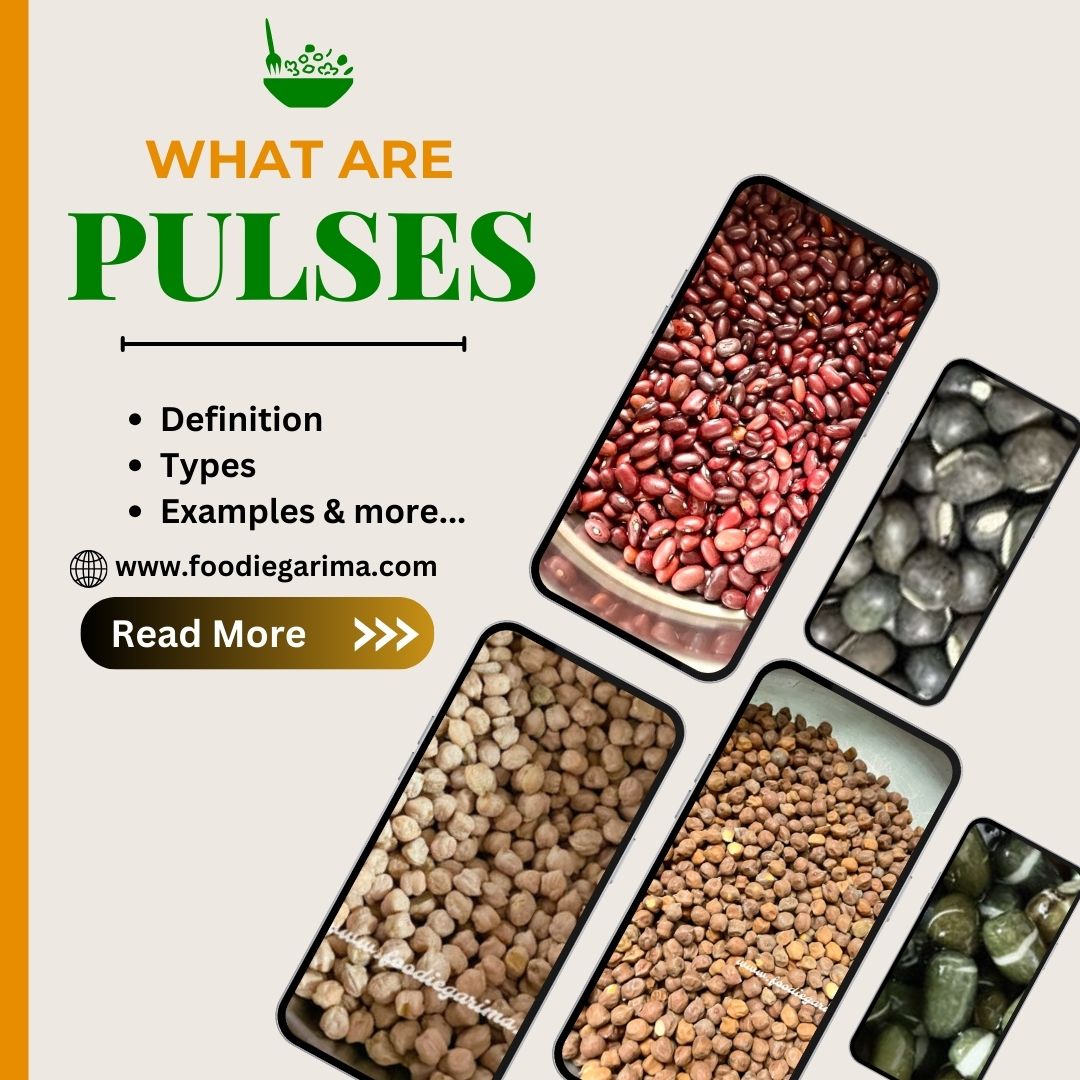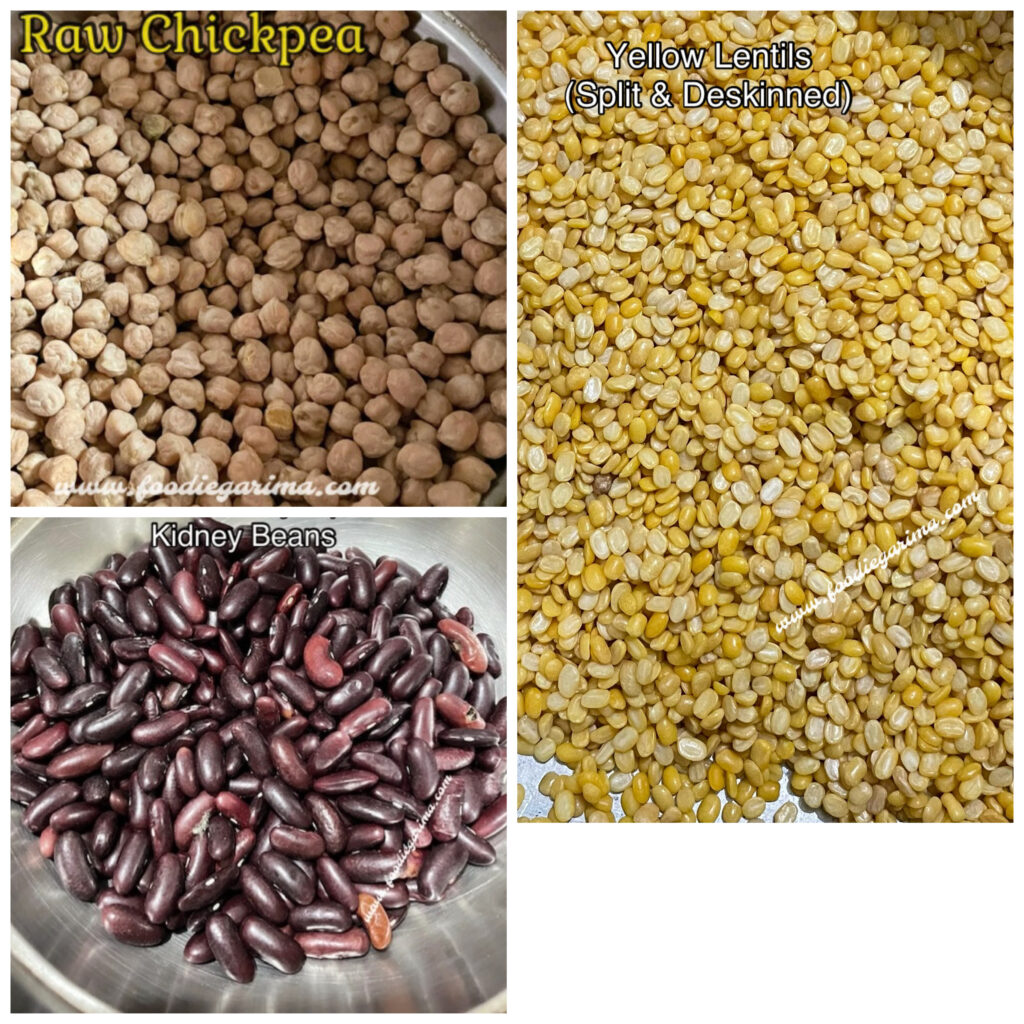5 January, 2025
What are Pulses | Types and Examples

Pulses Types and Examples | Complete Explanation
Pulses have been a dietary staple for centuries, yet their incredible health benefits and culinary versatility often go unnoticed. From Lentils and Chickpeas to Black Beans and Split Peas, Pulses are nutrient-dense, sustainable, and affordable. Let’s explore the world of pulses and understand why they deserve a prominent place in your diet.
What Are Pulses?
Definition: Pulses are the dried seeds of plants in the Legume family. They are distinct from fresh Legumes like Green Beans or Soybeans due to their dried nature and extended shelf life.
Examples:
- Lentils
- Chickpeas
- Black beans
- Kidney beans
- Split peas
Key Features:
- High in protein and fiber
- Naturally gluten-free
- Low in fat
- Affordable and widely available

Types of Pulses
- Lentils:
- Varieties include red, green, brown, and black lentils.
- Quick-cooking and versatile.
- Chickpeas (Garbanzo Beans):
- Used in hummus, curries, and salads.
- Rich in protein and iron.
- Black Beans:
- Popular in Latin American cuisine.
- High in antioxidants.
- Kidney Beans:
- Common in chili and stews.
- Rich in dietary fiber.
- Split Peas:
- Often used in soups and purees.
- Packed with protein and essential nutrients.
Culinary Uses of Pulses
Pulses are incredibly versatile and feature in various global cuisines:
- Soups and Stews: Lentils, split peas, and black beans are staples in hearty soups and stews.
- Salads: Chickpeas and kidney beans add protein and texture to salads.
- Curries and Dals: Pulses are integral to Indian and Middle Eastern cuisines.
- Snacks: Roasted chickpeas and lentil chips are healthy snack options.
- Flours: Pulses like chickpeas are ground into flours (e.g., besan) for baking and frying.
- Burgers and Patties: Black beans and lentils are commonly used in plant-based burger recipes.
For more recipes, click the link https://foodiegarima.com/blog-3/
Tips for Cooking Pulses
- Soaking: Soak dried pulses overnight to reduce cooking time and enhance digestibility.
- Rinsing: Rinse canned pulses thoroughly to remove excess sodium.
- Seasoning: Add herbs and spices during cooking to enhance flavor.
- Pressure Cooking: Use a pressure cooker for quicker preparation of dried pulses.
Nutritional Benefits of Pulses
- Rich in Protein: Pulses are an excellent plant-based protein source, ideal for vegetarians and vegans.
- High in Fiber: They promote digestive health and help maintain healthy cholesterol levels.
- Low Glycemic Index: Pulses release energy slowly, making them beneficial for blood sugar control.
- Micronutrient Powerhouse: Pulses are rich in iron, magnesium, potassium, and folate.
- Low in Fat: Pulses are a heart-healthy choice with minimal fat content.
Health Benefits of Pulses
- Supports Heart Health: The fiber and potassium in pulses help lower cholesterol and regulate blood pressure.
- Aids in Weight Management: High fiber and protein content promote satiety and reduce overeating.
- Helps Manage Diabetes: Pulses’ low glycemic index makes them a smart choice for individuals with diabetes.
- Boosts Digestive Health: Dietary fiber in pulses supports gut health and prevents constipation.
- Enhances Bone Health: Pulses contain essential nutrients like calcium and magnesium, which strengthen bones.
Fun Facts About Pulses
- Ancient Food: Pulses have been cultivated for over 10,000 years.
- Global Staple: India is the largest producer and consumer of pulses.
- Food of the Future: Pulses are recognized by the UN as a sustainable food source.
- Protein Packed: Pulses contain more protein than most other crops.
Why Should You Include Pulses in Your Diet?
- Budget-Friendly: Pulses are one of the most affordable sources of protein.
- Sustainable: Their low environmental footprint makes them a responsible food choice.
- Nutritionally Dense: Packed with protein, fiber, and essential nutrients, pulses are a superfood.
- Culinary Versatility: From soups to snacks, pulses fit seamlessly into any meal.
Pulses are more than just a food group; they are a cornerstone of healthy eating and sustainable living. Their nutritional benefits, culinary flexibility, and environmental advantages make them an indispensable part of any diet. Whether you’re looking to add more plant-based protein to your meals or support sustainable agriculture, Pulses are the perfect choice.
FAQs
1. Are Pulses gluten-free?
Yes, Pulses are naturally gluten-free and suitable for people with gluten sensitivities.
2. Can Pulses replace meat in my diet?
Absolutely! Pulses are a rich source of protein and can serve as a plant-based alternative to meat.
3. How should I store Pulses?
Store dried Pulses in an airtight container in a cool, dry place.
4. Are Pulses suitable for weight loss?
Yes, the high fiber and protein content in Pulses promote satiety and support weight management.
5. What is the best way to cook Pulses?
Soak dried Pulses overnight and cook them in boiling water until tender. Alternatively, use a pressure cooker for faster results.
